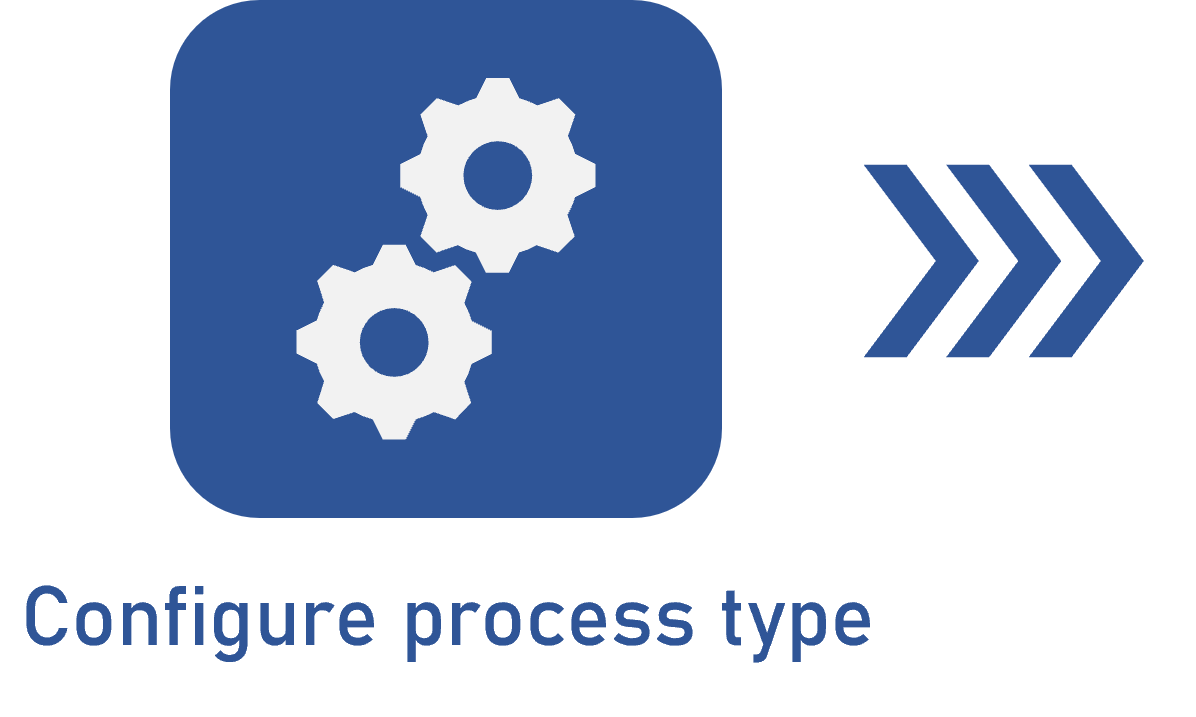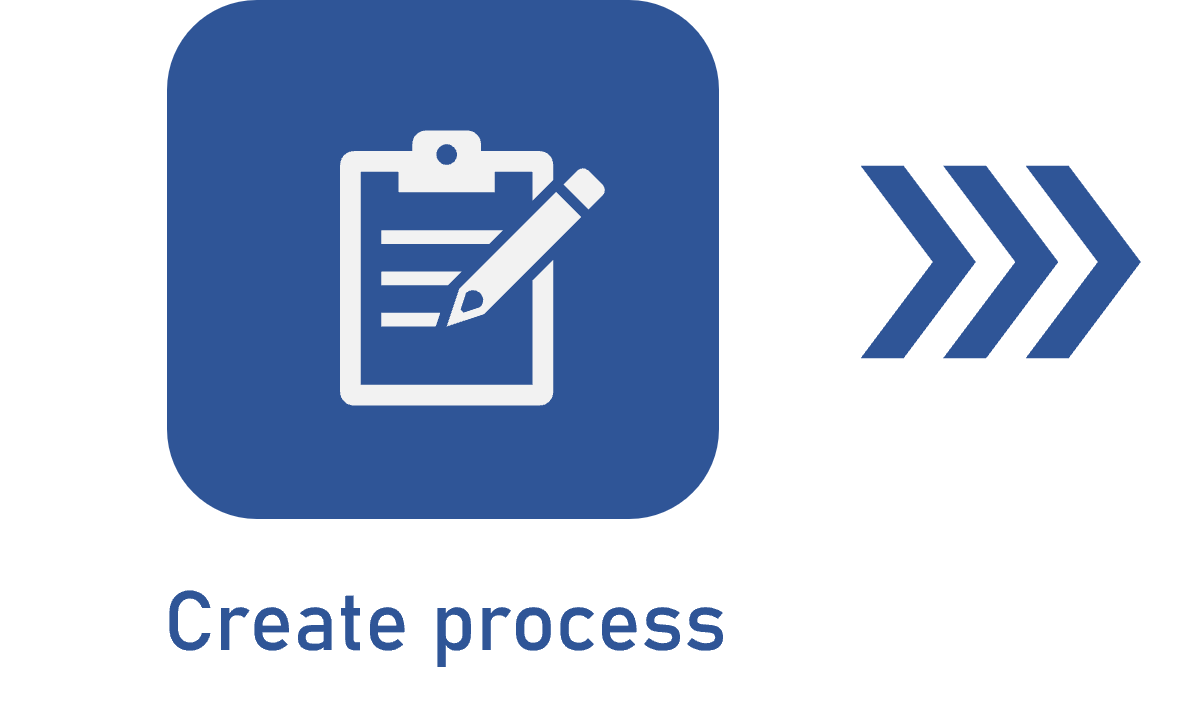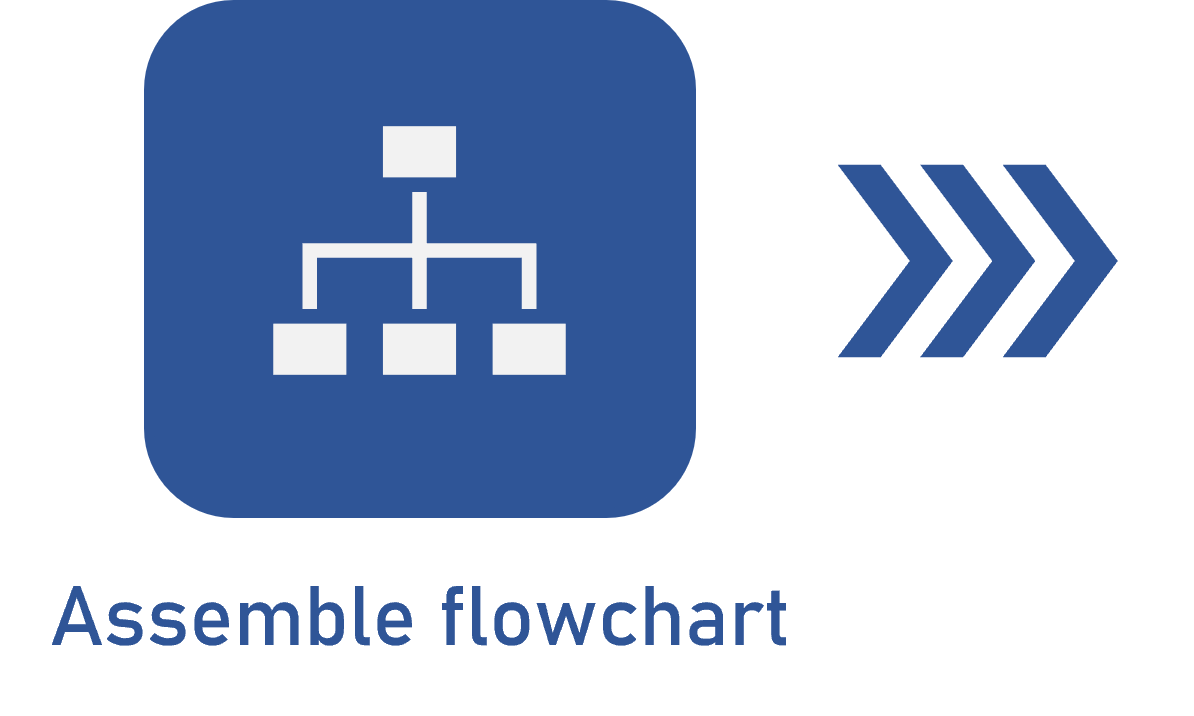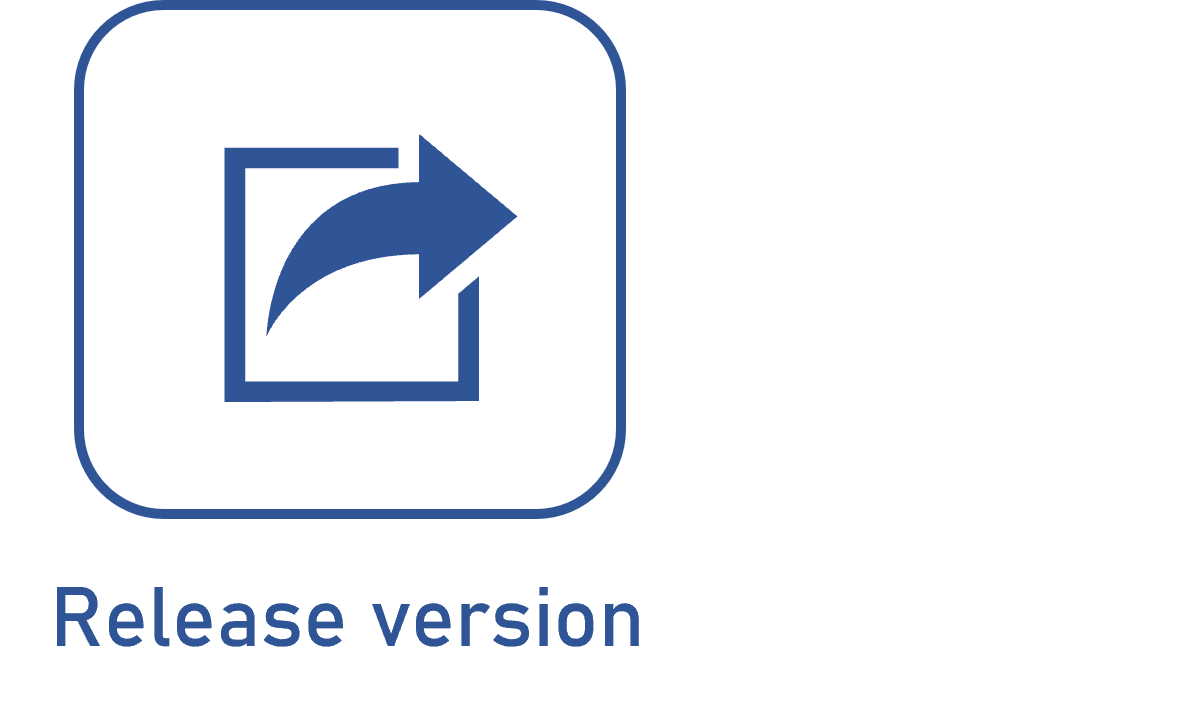Editing event data
Prerequisites
- Access to the File > Process (PM022) menu.
- Previously created process.
- Previously designed flowchart.
Introduction
This article will teach you the difference between certain events and how to edit their data in the flowchart of a process.
The events that will be covered are highlighted in the image below:

For further information regarding events, refer to the Process flowchart events article.
Not all events can have their data edited. In this article, we will cover only those that can be edited. Take a look at the table with the editable events and then see how to edit them.
Events
| Icon | Event | Type | Description |
|
Timer |
Start | This event indicates that the process will be started in a |
|
Timer | Intermediate | This event indicates that the process must wait for a time condition in order to continue the flow. |
|
Message (send) |
Intermediate | This event indicates that a message will be thrown. It allows for sending standardized messages, through templates, containing information inserted in the data of the process during its execution. |
|
Message (receive) |
Intermediate |
This event causes the process flow to wait for a message to be received from another process. To this end, the code defined for the receiving event must be configured in a message sending event in another process. Note: in this event, it is also possible to configure the correlation between instances, that is, the message receiving event will only be executed if the process containing the message sending event has a certain value. |
|
Link (send) |
Intermediate | Link events connect different points of the flow within the same process. They are useful for complex flowcharts, in which too many connectors may make it difficult to view and organize the process. |
|
Link (receive) |
Intermediate | "Link (receive)" events only allow for viewing the flows they are receiving, with the configuration being set in the "Link (send)" event. |
|
End | End | This event ensures that the process will be completely closed, cancelling any parallel flows. |
Editing an event
In order for event data to be edited, the flowchart must be saved once any element is added.
Timer - Start
1. To edit, select the event (start timer) in the flowchart and click on the Data button.

2. On the screen that will be opened, enter an ID # and a name for the event.

3. Then, make other changes in the tabs mentioned below:
Tab |
Fields for editing |
General |
This tab is used to set the configuration related to event scheduling. To do that, fill in the following fields:
Start: enter the start date and time for the execution of the timer.
Next execution: the start date and time for the next execution of the timer will be defined according to the recurrence information that will be inserted in the following fields.
Recurrence: fill in the fields below.
Delete after finishing scheduling: check this field so that, once the number of configured recurrences is reached, the timer execution scheduling is deleted. Note: with this option, only the execution scheduling will be deleted from the list with the schedulings configured in the system. |
Notified user |
This tab is used to configure the users who must be notified whenever the event is triggered. To do that, click on the
Notify: select how the group of users who will be notified via the scheduling will be composed:
|
Start |
This tab displays the processes that will be started by the event. |
History |
This tab displays the log of the completed executions. Remember that the executions are performed according to the frequency configured on the General tab. If an error occurs during execution, click on the |
4. After the configuration, save the scheduling data of the timer event.
Timer - Intermediate
1. To edit, select the event (intermediate timer) in the flowchart and click on the Data button.

2. On the screen that will be opened, edit the data.

3. Then, make other changes in the tabs mentioned below:
Tab |
Fields for editing |
General |
Enter the general data of the event:
Duration: determine for how long the process must wait in order to continue the execution of the remaining items in the flowchart. This duration may be given in hours/minutes (hhh:mm), day(s), week(s), or month(s). When the formula is configured, the duration in this field will only be used when no value is returned. Note: it will not be possible to select a time shorter than 15 minutes when scheduling the timer.
Formula: click on this button to set the duration of the timer using a formula. On the screen that will be opened, enter the desired formula. See below an example of a formula in which the DEFINE_ACTIVITY_DURATION() function is used based on the priority set for the process through the PRIORITY() function. Example 1: IF(PRIORITY('Name') = 'Critical') RETURN DEFINE_ACTIVITY_DURATION('008:00';'hhh:mm') ELSE SE(PRIORITY('Name') = 'High') RETURN DEFINE_ACTIVITY_DURATION('3;'Day(s)') ELSE RETURN DEFINE_ACTIVITY_DURATION('5;'Day(s)') END END In this example, the process priority was configured with a simple listing evaluation method, which contains the "Normal", "High", and "Critical" criteria. Thus, the following priorities have been defined:
Use process calendar: if this field is checked, the calendar set as default through the Administration component will be used to calculate the time set on the timer. |
| Revision/Status | The Revision tab will only be displayed if the process is configured with an automation whose operation is Revision; otherwise, the Status tab will be displayed. In that case, select what will be the process status as soon as the event is executed. Only those statuses that are configured in the same way as process automation will be displayed. |
4. After the configuration, save the data of the timer event.
Message (send) - Intermediate
1. To edit, select the event (message - send) in the flowchart and click on the Data button.

2. On the screen that will be opened, edit the data.

3. Then, make other changes in the tabs mentioned below:
Tab |
Fields for editing |
|
This tab is used to set the configurations referring to the e-mails that will be sent. To do that, fill in the following fields:
Sender: insert the e-mail address of the message sender. To do so, select the email server that will be used to send the message event. Note: the available senders will be all e-mail servers registered in SoftExpert Configuration (Configuration > E-mail server).
Subject: enter the title of the e-mail that will be sent when this event is executed.
Content: fill in the fields referring to the content of the e-mail:
Attribute: select the attributes that will be displayed in the e-mail. Only attributes associated with the process will be available for selection.
Notified user: select the users who will receive the message event e-mail. If the Consider message event e-mail list option is checked, the notified users will be the same as those for the Message event selected in the respective field. Otherwise, the e-mail addressees can be configured manually. It is possible to choose from the following message sending profiles:
Attachment: set the configurations so that the files attached to the process instance are sent along with the event e-mail. To do that, check the following fields:
|
|
| Message |
Use this tab to allow the message event to execute a message receiving event from another process. On this tab, it is also possible to configure the correlation between instances, that is, the message receiving event of another process will only be executed if both processes have a certain value. To do that, fill in the following fields:
Correlation between instances Correlation between instances allows using advanced expressions with several combinations; for example, it is possible to compare several parameters while only one of them must be "true". If any configuration is performed in this section, the message receiving event of the other process will only be executed if it has the same value as that in the event in question. Use the available buttons to add or edit the correlation configuration. On the screen that will be displayed, fill out the following fields: Name: enter the name of the correlation (it must be the same as that of the message receiving event). Value: define the value type of the correlation:
|
| Survey |
On this tab, it is possible to configure the survey that will be e-mailed to the users who will be notified. In order to do that, use the following fields: For this feature to work correctly, the SoftExpert Survey component must have an active license key in the system. Associate survey: check this option and, in the Survey template field that will be enabled, select a template created in SoftExpert Survey, on which the surveys that will be sent will be based.
|
4. After configuring the message (send) event, save it.
Message (receive) - Intermediate
1. To edit, select the event (message - receive) in the flowchart and click on the Data button.

2. On the screen that will be opened, edit the data.

3. Then, perform the following changes:
| Fields for editing |
|
Name: this field displays the name of the message receiving event. The name can only be changed through the General section of the item panel.
Message (Code): this field displays the code of the message receiving event. This code can only be changed through the General section of the item panel.
Correlation between instances Use this section to configure the correlation between instances. If any configuration is performed in this section, the message receiving event of the other process will only be executed if it has the same value as that in the message sending event in question. Use the available buttons to add or edit the correlation configuration. On the screen that will be displayed, fill out the following fields:
|
4. After the configuration, save the message (receive) event.
Link (send) - Intermediate
1. To edit, select the event (link - send) in the flowchart and click on the Data button.

2. On the screen that will be opened, edit the data.

Destination: enter in this field the Link (receive) event that will establish the connection to the link in question.
3. Then, make other changes in the tabs mentioned below:
Tab |
Fields for editing |
Input flow |
This tab will display the predecessor flows of this event. |
Output flow |
This tab will only display the Link (receive) event, because this event accepts no other output flow. |
Revision/Status |
The Revision tab will only be displayed if the process is configured with an automation whose operation is Revision; otherwise, the Status tab will be displayed. In that case, select what will be the process status as soon as the event is executed. Only those statuses that are configured in the same way as process automation will be displayed. |
4. After configuring the link (send) event, save it.
Link (receive) - Intermediate
1. To edit, select the event (link - receive) in the flowchart and click on the Data button.

2. On the screen that will be opened, edit the data.

3. Then, make other changes in the tabs mentioned below:
Tab |
Fields for editing |
Input flow |
This tab will only display the Link (send) event, because this event accepts no other input flows. For each Link (receive), there must be at least one Link (send). |
Output flow |
This tab will display the successor flows of this event. |
Revision/Status |
The Revision tab will only be displayed if the process is configured with an automation whose operation is "Revision"; otherwise, the Status tab will be displayed. In that case, select what will be the process status as soon as the event is executed. Only those statuses that are configured in the same way as process automation will be displayed. |
4. After configuring the link (receive) event, save it.
End - Final
1. To edit, select the event in the flowchart and click on the Data button.

2. The data of the end event will be displayed.

3. Then, make other changes in the tabs mentioned below:
Tab |
Fields for editing |
Input flow |
This tab will display all the predecessor items in relation to the end point. |
Revision/Status |
The Revision tab will only be displayed if the process is configured with an automation whose operation is Revision; otherwise, the Status tab will be displayed. In that case, select what will be the process status as soon as the event is executed. Only those statuses that are configured in the same way as process automation will be displayed. |
Conclusion
Thus, you have learned how to edit data on all event types!




 button and fill out the following fields on the screen that will open:
button and fill out the following fields on the screen that will open: button to view the generated log.
button to view the generated log.